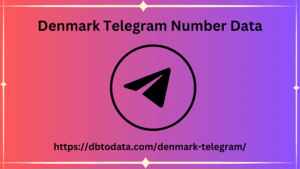Post by amirmukaddas on Mar 14, 2024 11:57:15 GMT 5.75
Let's now see what the two main tools are useful for analyzing the competition. The main models used by consultancy firms around the world to analyze competitors are Porter's 5 forces model and SWOT Analysis. The model called Porter's 5 forces in honor of its creator, Michael Porter, aims to define the environment in which an organization will operate with its product/service, by defining: Customers , i.e. the recipients of our product/service, who are important because they are the ones who keep an organization alive; Suppliers, i.e. those who provide the materials useful for production, which are important because they affect the quality of our product/service, and whose purchase price affects our final sales price; Direct competitors , i.e. the main " enemies" of a brand.
They must be evaluated, in terms of concentration, diversity of structure, production capacity, differentiation of supply and cost structure; Potential entrants , i.e. operators capable of developing the same technology as us, perhaps even at lower costs, presenting themselves as our own competitors in the near future; Producers of substitute goods, i.e. those who with a different offer satisfy the same use function or Denmark Telegram Number Data the same consumer need; The SWOT Analysis, on the other hand, tends to provide an exhaustive picture of the strengths and weaknesses of an organization and opportunities-threats coming from the market, in order to better understand which strategies are intended to be applied if one decides to operate in that area. This technique is attributed to Albert Humphrey, who led a research project at Stanford University between the 1960s and 1970s. The SWOT analysis is therefore composed as follows: strengths.

The qualities of an organization, are useful in achieving the objective; weak points, i.e. what is missing or not at the top in the organization, which prove detrimental to achieving the objective; opportunities, positive external conditions to achieve the goal; threats, external conditions that could harm our performance; Online competitor analysis Whether we are an online company or one that operates offline, in general the reasoning patterns and analysis models are very similar. So we need to try to translate the thought patterns used up to this point and transfer them to the network, perhaps integrating them. In fact, other forces come into play online that have not been considered until now, but which prove to be extremely important. Furthermore, compared to an offline market, which tends to be more geolocalised, when it comes to online competition, the concept of competition often loses its geographical reference and expands globally.
They must be evaluated, in terms of concentration, diversity of structure, production capacity, differentiation of supply and cost structure; Potential entrants , i.e. operators capable of developing the same technology as us, perhaps even at lower costs, presenting themselves as our own competitors in the near future; Producers of substitute goods, i.e. those who with a different offer satisfy the same use function or Denmark Telegram Number Data the same consumer need; The SWOT Analysis, on the other hand, tends to provide an exhaustive picture of the strengths and weaknesses of an organization and opportunities-threats coming from the market, in order to better understand which strategies are intended to be applied if one decides to operate in that area. This technique is attributed to Albert Humphrey, who led a research project at Stanford University between the 1960s and 1970s. The SWOT analysis is therefore composed as follows: strengths.

The qualities of an organization, are useful in achieving the objective; weak points, i.e. what is missing or not at the top in the organization, which prove detrimental to achieving the objective; opportunities, positive external conditions to achieve the goal; threats, external conditions that could harm our performance; Online competitor analysis Whether we are an online company or one that operates offline, in general the reasoning patterns and analysis models are very similar. So we need to try to translate the thought patterns used up to this point and transfer them to the network, perhaps integrating them. In fact, other forces come into play online that have not been considered until now, but which prove to be extremely important. Furthermore, compared to an offline market, which tends to be more geolocalised, when it comes to online competition, the concept of competition often loses its geographical reference and expands globally.



